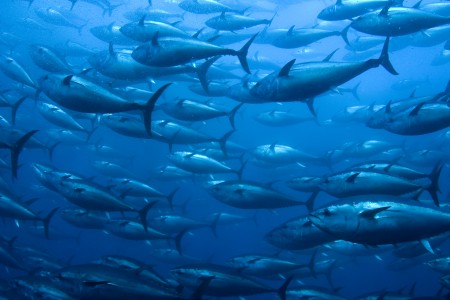← Back
Sustainable management of marine resources and climate

CLS has been developing effective solutions for the last twenty years. These new tools combine space observations, numerical models, positioning systems and real-time data collection.
Today, marine resources are too often depleted (due to overfishing and illegal, unreported, and unregulated fishing) and are also victims of human activity (pollution). These stocks will only be able to adapt to global warming if we
return to sustainable fishing levels. Today, scientists have found that stocks of certain species such as bigeye tuna in the Pacific have been reduced to less than 20% of their original biomass as a result of fishing pressure. This pressure,
added to the effects of global warming, might lead to their stock collapse. The reasonable threshold established by scientists is around 40%. According to recent simulations, the peak pressure that major tuna stocks will experience, from the combined effects of fishing and climate change, should occur by mid-century.
For nearly 30 years, CLS has been working for the sustainable management of marine resources using satellite observation. More recently, CLS has begun modelling marine ecosystems. What do these CLS modellers predict for the future? Which nations will be the winners and which the losers?
Science calls the Tune(a) p.5
Tuna and climate : trenads and forecast p.6



